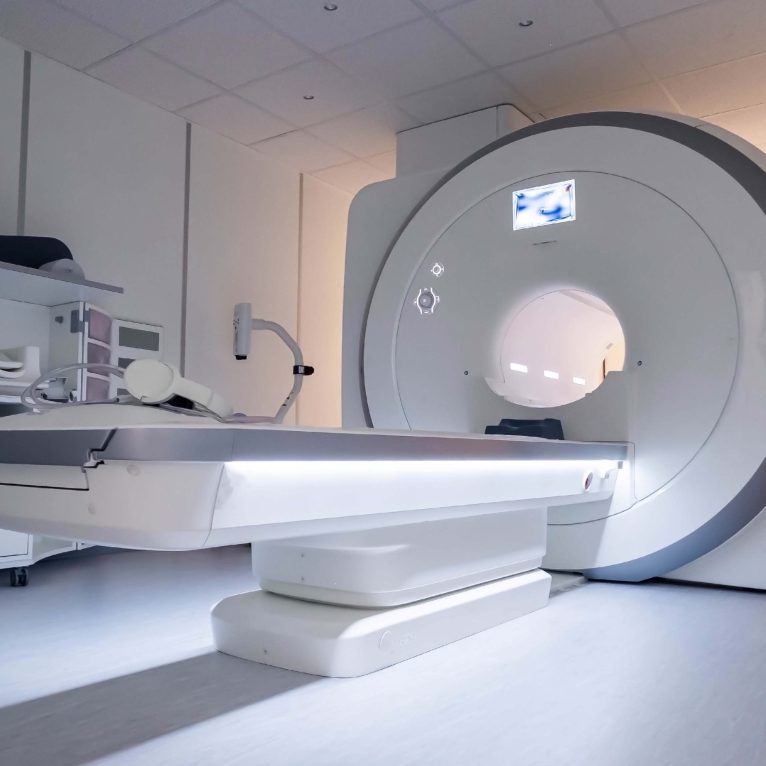
Written by

Cranfield, UK, 07 May 2024 – The global C-arm market was estimated to be worth US$4.2 billion in 2023 and has seen demand for both the surgical and interventional X-ray segments increase over the last few years. This expansion stemmed from factors like widening clinical applications, improved access to care programs, and increased training to upskill doctors. However, the ongoing economic constraints on healthcare expenditure, political instability in certain regions and anti-corruption measures in China have weighed down on the market’s growth.
According to Signify Research’s new report, the Global C-arm market is projected to exceed US$5 billion by 2028. On average, the Interventional X-ray and Mobile C-arm market revenues are projected to grow annually at the rate of 3.9% and 5.2% respectively over the next five years.
Image Intensifier market demand to decline significantly over the next five years
The mobile C-arm market is experiencing a pivotal shift, driven by the advancements in technology and the need for improved image quality. Subsequently, the image intensifier (II) market continues to decline due to potential reimbursement reductions, the drive towards more sophisticated imaging solutions, and challenges in sourcing critical components. In response, some mobile C-arm manufacturers have stopped selling II in key markets. To compensate for the declining II market, purchasing has shifted primarily to 2D Flat Panel Detectors (FPDs), with manufacturers expanding their portfolios to include a variety of low to mid-range offerings. The 3D C-arm market is also poised for further growth, driven by new players entering the market and the rising demand for clinical applications like bronchoscopy biopsies.
Interventional X-ray market driven by advancements in cardiology, neurology, and oncology procedures
Cardiology will be the fastest growing segment in the interventional X-ray market, driven by structural heart procedures including Transcatheter mitral value replacement. Other factors contributing to the increased demand include expansion of ablation therapy to a broader patient group; the increase in minimally invasive aortic valve replacement procedures; increase in new devices such as valves and stents and improved training of physicians to perform these procedures.
Within radiology, the interventional neurology segment will see an uptick in demand due to the expansion of stroke centres and training programs for doctors, leading to an increase in demand for biplane technology. The outlook for interventional oncology also remains favourable with increase in ablation and embolisation procedures, particularly for the liver, prostate, and kidneys.
Regional growth influenced by funding in healthcare access and availability of trained workforce

The C-arm market growth will be mainly driven by the Asia Pacific region. Increase in regional investments across the Asia Pacific region, to improve healthcare, emergence of regional players with improved quality products, and disease awareness programs are driving the growth here. Countries such as China and India will see demand for interventional and surgical X-ray equipment increasing, which is driven by investments to improve access to healthcare in rural and remote areas. For instance, in India, government regulations on stent costs have led to increased adoption of Cath-labs in Tier 3 and 4 cities.
The Latin American market is facing severe uncertainties due to political unrest and inflation. However, the region is projected to grow in response to new tenders expected in some of the major countries such as Chile. Doctors in this region are conservative, prioritise safety and minimise risk, influencing the type of equipment they use.
The North American C-arm market is experiencing an increased demand for advanced technologies, particularly multi-modality interventional suites. There is progressive integration of interventional radiology (IR) with independent urology within the United States, further driving the uptake of procedures such as prostate artery embolisation. This will also enable comprehensive care for conditions like benign prostatic hyperplasia within a single practice. However, the market faces challenges from healthcare funding constraints, including Medicare payment cuts in the US.
Fund allocation has been a pivotal element for numerous European healthcare systems, enabling substantial investments in cutting-edge medical equipment over the recent years. The overall outlook for Europe is moderately positive, as funding cuts will not drastically affect demand for this equipment. However, the more pressing issue within Europe is the scarcity of skilled professionals rather than a shortage of capital for equipment procurement.
Vendor strategies to include value-based partnerships and integrating advanced technologies
As we look to the future, several key trends are expected to shape the Interventional and Surgical C-arm equipment landscape, including:
Vendors will start positioning as value-based partners
- The United States and Europe are witnessing an increase in value-based partnerships between vendors and healthcare providers. These partnerships will involve long-term commitments, focused on holistic approaches that extend beyond mere supply of systems or imaging solutions.
- Companies will have to position their offerings beyond doctors and payers. A patient-centric approach is crucial to support patients throughout their entire disease journey, from initial diagnosis to treatment and follow-up. This involves seamlessly integrating various modalities and data sources.
Shift towards multi-modality vendors
- Developed markets will see a shift toward purchasing from vendors offering multiple modalities. Payers are currently streamlining equipment procurement and looking for integrated and connected solutions to improve operational performance.
- The increase in multi-modality deals makes it challenging for small to mid-size single-modality vendors that do not offer expanded portfolios.
Launch of Service-Based models
- Maintenance services are now a key determinant in the purchasing decisions of customers.
- Companies are now increasingly providing comprehensive packages that support the device with ongoing software upgrades and maintenance. Vendors must prioritise swift maintenance and introduce systems designed to remotely diagnose equipment issues and simplify servicing to meet this demand effectively
Increased integration of artificial intelligence and new technologies
- The impact of AI in Interventional Radiology (IVR) and surgical X-ray is currently limited to mainly pre-operative image analysis and optimising dose reduction. Vendors will continue to include premium features to improve image quality, reduce dose and improve workflow efficiency, but there will be more focus on procedural guidance and residual disease predictions.
- The integration of robotics for enhanced precision and safety, along with augmented reality for the education, procedure planning and simulation-based training is expected to rise.
Future Outlook
The future of Interventional C-arm market will be stable in the short to mid-term. The growth in this sector will be driven mainly by emerging markets like China, India and the Middle East, where there is increased investment in healthcare. In terms of competition, emerging companies like United Imaging and Innvolution Imaging are expected to maximise local-made policies and grow and penetrate new markets with lower-cost quality products.
In the next five years, the surgical C-arm market will see image intensifiers being replaced by Flat Panel detectors. Subsequently, the demand for 2D FPD C-arms will increase, and their average selling price is expected to decline and be comparable to image intensifiers. The adoption of 3D C-arm will also increase not just in developed markets but also in emerging markets driven by emergence of local players and adoption of the equipment for wider clinical applications. Companies like Nanjing Perlove have introduced new 3D C-arm equipment and are expanding their presence in Europe and Latin America.
In the mid- to long-term, companies will focus on adding more value to their products. In developed markets, companies will shift towards long-term value-based partnerships providing holistic solutions that improve healthcare outcome. The application of Artificial intelligence will also expand beyond the current narrow scope such as preoperative support, dose management and education, to functions including procedural guidance and residual disease prediction.
The interventional and surgical X-ray market present significant growth opportunities for participants that can adapt their strategies to keep pace with the regional market dynamics, product evolution, and unmet needs of key stakeholders.
Related Research
Interventional and Surgical X-ray – World – 2024
Signify Research’s recent report “Interventional and Surgical X-ray – World – 2024” presents market dynamics, estimates, forecasts, competitive analysis and major drivers for the Interventional and Surgical X-ray market. Products included in this report are image intensifier mobile C-arm, 2D mobile C-arm, 3D mobile C-arm and O-arm, Hybrid operating rooms, General vascular angiography, Oncology / Body, Neurology, Interventional gastro, General coronary, Structural heart lab and Electrophysiology.
About The Author
Poornima joined Signify Research’s Medical Imaging Team in 2023. She brings over 14 years of experience in healthcare market research, analysis and business intelligence. She has a master’s degree in bioinformatics and a degree in agriculture and plant science.
About the Medical Imaging Team
Signify Research’s Medical Imaging team formulates expert market intelligence for some of the leading Ultrasound, CT, MRI, and X-ray vendors. Combining primary data collection and in-depth discussions with industry stakeholders, our thorough research approach yields credible quantitative and qualitative analysis, helping our customers make critical business decisions with confidence. Furthermore, our commitment to seeking a plurality of perspectives across the markets we cover guarantees that our insights remain independent and balanced.
About Signify Research
Signify Research provides healthtech market intelligence powered by data that you can trust. We blend insights collected from in-depth interviews with technology vendors and healthcare professionals with sales data reported to us by leading vendors to provide a complete and balanced view of the market trends. Our coverage areas are Medical Imaging, Clinical Care, Digital Health, Diagnostic and Lifesciences and Healthcare IT.
Clients worldwide rely on direct access to our expert Analysts for their opinions on the latest market trends and developments. Our market analysis reports and subscriptions provide data-driven insights which business leaders use to guide strategic decisions. We also offer custom research services for clients who need information that can’t be obtained from our off-the-shelf research products or who require market intelligence tailored to their specific needs.
More Information
To find out more:
E: enquiries@signifyresearch.net
T: +44 (0) 1234 986111
www.signifyresearch.net

